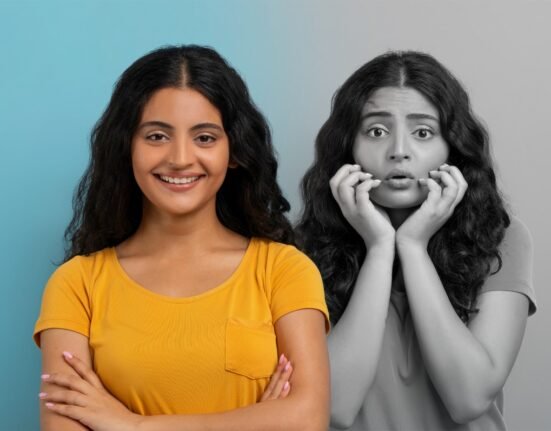In the ever-evolving digital age, the emergence and evolution of social media influencers is a fascinating phenomenon to watch as they continue to solidify themselves as figures of influence. A multidimensional viewpoint consists of analyzing influencers from the aspirational angles along with the manipulative angle to get a balanced reality of the influence they create among their audiences.
Firstly, there exists a need to understand the characteristics that define an influencer. Influencers appear as modern-day internet celebrities with the growth of social media platforms. As social media does fall under the umbrella of mass media, it does contain its fundamental principles as well. One such is the existence of opinion leaders in traditional forms of media. In a highly simplified way, it can be said that influencers are the opinion leaders of today’s time where social media is the prime media for consumption.
The specialness of the influencer from other opinion leaders lies in their resolve for authenticity amidst the commercial interest, exploration of subjects that either appeal to the masses or niche subjects that form a sense of community through shared interests, focusing on content creation where production in each and every aspect plays an integral role, establishing a relationship that fulfills the needs of the viewer and at last following an ethical code of conduct towards a positive impact overall.
However, the realm of social media and accompanying influencers are not as straightforward as it seems. There exist several machinations behind the curated images of an influencer.
1. Illusion Of Authenticity
Every influencer has to portray a curated persona as it is aspiration yet relatable. And thus begins the tug of war between authenticity and the need to maintain a public image. An important detail is that every person at their workplace has a persona and for influencers, their workplace is social media. This is the dichotomy of an influencer’s life.
2. Curation
Every aspect of an influencer from the content creation, tone, aesthetics, and production techniques used is intentional in nature. A well-planned blueprint is followed but effortless and spontaneous results is shown.
3. Projection
The aspirations of the viewer are placed upon the influencer. And there exists this desire among the audience that an influencer needs to embody or reflect some of the qualities that the audience is desired and collectively aspired to by many. This results in forming relatability and connections through shared values.
4. Social Validation
The influencer is plagued by the workings of the algorithm, that promotes the trending content on a platform. The social validation and in the internet language FOMO or the fear of missing out results in influencers participating in trends that they might not resonate with.
5. Ripple Effect
The job of an influencer is to influence, thus creating a chain of promotional activities that spark consumer behavior for the benefit of industries that utilize the advertising by influencers.
6. Entangled In The Metrics
The influencer is controlled by the metrics of engagement and reach. These numerical metrics can sometimes create scenarios where ethicality and authenticity is compromised to obtain optimized and desirable metrics.
7. The Strive For Perfection
Influencers need to maintain polished and idealized versions of themselves. And this flawless image compromises with the genuine messaging being imparted. The transparency is tampered with.
8. Collaboration
Influencers have to produce sponsored content for brand collaborations. And this has raised a question of the authenticity and transparency of the content that is being influenced by commercial interest which is always surrounded by murky details of unethical practices. The monetary opportunities sometimes overpower the integrity of the content.
9. The Weaving Of Allure
Influencers gain their aspirational quality through their role of inspiring and motivating their audiences. They do this by showcasing desirable achievements, experiences, and lifestyles. Furthermore, creating an unconscious gap of status between themselves and their followers, but the presentation of this material is shown in a manner that is not unattainable even though it is.
10. Inclusion Or Illusion
Demographics and target audiences are selected by the influence to keep the engagement active. This façade of inclusivity is unethical as social media is a place for all and producing content for a particular demographic and catering towards them while passively excluding another demographic does raise concerns.
11. Rhetoric
Influencers just like the general public have their own set of ideologies and beliefs. However, inciting followers through the art of persuasion is unethical to say the least.
The above points were from the influencer’s side. Now, there needs to be an understanding of the side of the one being influenced, that is the viewer. This is necessary because most communication styles are a two-way street.
First and foremost, there exists a need to understand persuasion itself. And the reasons for which the audience gets swayed.
1. Cognitive Bias
Such as Confirmation bias and anchoring affect decision-making as the viewer’s identity of self and desires get validated by the influencer.
2. Reciprocity
There exists a give-take relationship here as the viewer receives gratification of their need through the influencer either as a quantifiable product or something abstract in exchange for their attention, following the principles of economy of attention.
3. Cognitive Dissonance
Viewers seek to resolve cognitive dissonance by coming to believe a persuasive message. Influencers act as mediums to address the dissonance and create alignment between advertisers and the consumer.
4. FOMO
Influencers promote trends and the viewers get entangled in the web of the fear of missing out.
5. Gratification Of Needs
Social media is fast-paced and it fulfills the instant gratification needs of the audiences. Influencers leverage these needs in exchange for the attention they want. Resulting in some exploitative exchanges as well.
All in all, these create a mental health toll on both parties involved. Self-image issues, esteem issues, feelings of inadequacy, unhealthy idealization, and many more are commonly observed. Thus, there needs to be practices of informed engagement, meaning transparency in motives and advertising along with promotion of media literacy that includes dissemination of these techniques of content curation and image formation of a personality on social media.
Although, with upcoming technology and investments in the field of social media platforms, public relations firms also bring their ways of influence and mix them with the influence of the individual influencer.
Hence, audiences need to consume the social media content provided by the influencers in a critical manner.













Leave feedback about this